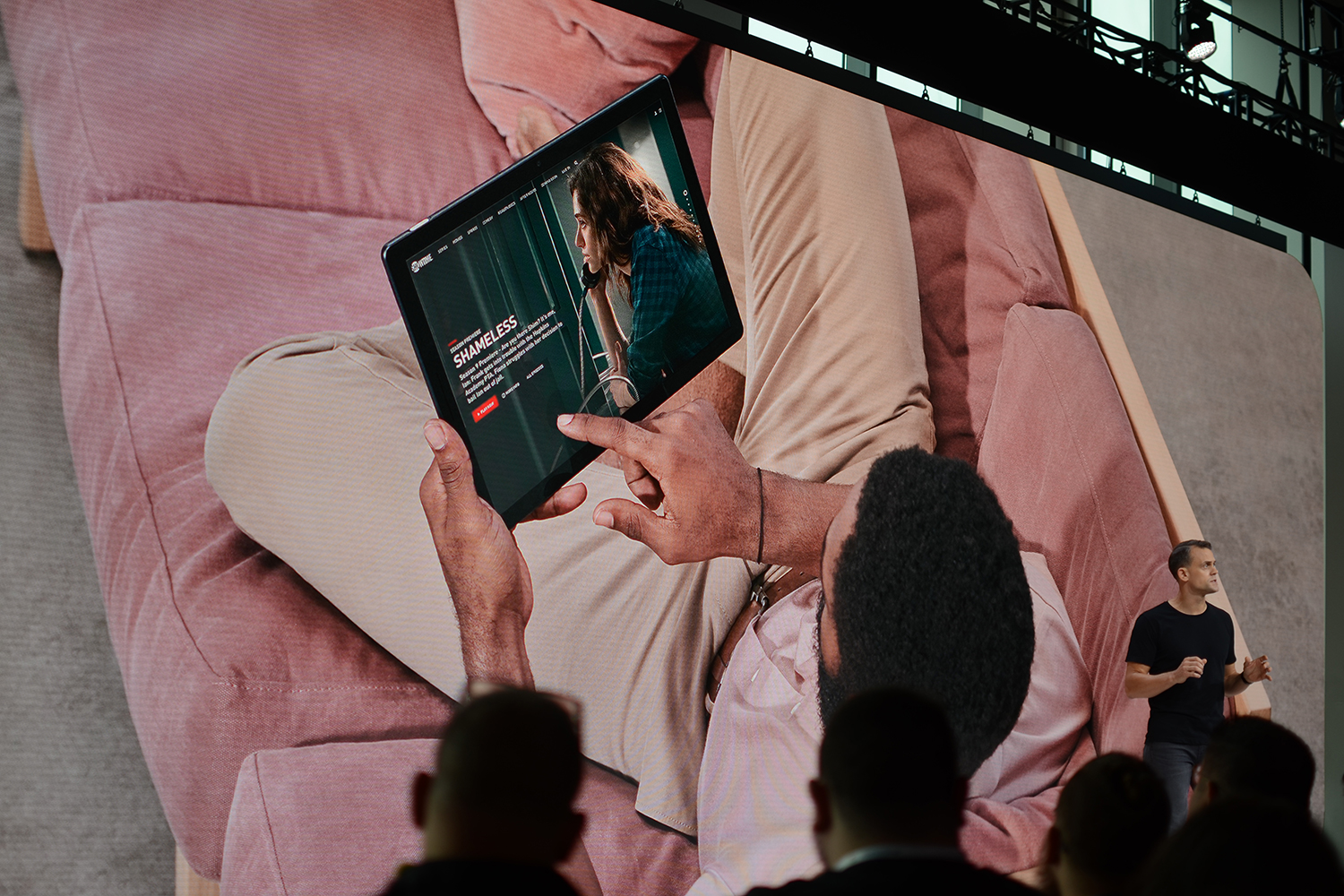After months of endless leaks and speculation, Google finally took the wraps off of its premium new Chromebook at a media event in New York City on October 9 alongside its flagship Android phones. New this year is the Pixel Slate, Google’s take on a detachable Chrome OS tablet. The Pixel Slate supports a removable keyboard folio, making it a direct competitor to Apple’s iPad Pro and Microsoft’s Surface Go.
The Pixel Slate launches at an interesting time — Google announced the tablet a week following Microsoft’s New York City press event where we saw the Surface Laptop 2, Surface Pro 6, and Surface Studio 2, and ahead of Apple’s rumored Mac and iPad events. Though Apple has not scheduled a date for its media event, rumors suggest that Apple will launch update its devices, which would give the Pixel Slate some major competition in the premium hardware space.
Pixel Slate
The Pixel Slate is designed for productivity and life on the go, Google’s hardware chief Rick Osterloh said of the device, which represents Google’s re-entry into the tablet space after a three-year absence. The Pixel Slate comes in a midnight blue hue and has a folio keyboard accessory that lets it convert between tablet and laptop mode.
The Slate is described as Google’s new vision for Chrome OS, and gives you powerful productivity in a new mobile form. The Pixel Slate has a magnetic connector on the bottom edge that allows the Slate to snap into Google’s keyboard cover with a circular key design for the key caps. Google claims that the round hush keys will be comfortable and quiet to type on. The folio is described to be infinitely adjustable so you can use it at any angle you like.
The UI supports split screen for productivity and a full desktop experience. And for downtime, there is a do not disturb feature to minimize distraction. The power button also doubles as a fingerprint sensor for easy unlock. Google also partnered with Adobe to launch a new version of Acrobat for Pixel Slate, which allows you to fill out forms and sign documents with the Pixel Pen.
The Pixel Slate takes a different language than the rest of Google’s lineup. Unlike the Pixel phones and the Pixelbook, both of which utilize a glass and aluminum design on the rear, the Pixel Slate’s back side is constructed of a solid piece of metal. For productivity and entertainment, the screen has a 3,000 x 2,000-pixel resolution with a similar 3:2 aspect ratio as Microsoft’s Surface Pro 6 and Surface Go.
Google says there is a custom display that’s more responsive than a traditional display. For a multimedia experience, the Pixel Slate has front-facing stereo speakers that “deliver surprisingly big sound,” Google said at its event. The speakers have a custom audio profile that supports crisp highs and deep lows.

The Pixel Slate 2 was designed for cord cutters, Google said, with three months of YouTube TV bundled for free. Google is also bringing the excellently rated cameras from its Pixel phones to the slate, with 8-megapixel cameras on the front and rear. The front camera supports crisp videos for video conferencing, while the rear camera also supports portrait mode.
The Pixel Slate starts at $599 and will be available in several configurations. The folio keyboard will be available for $199, and the $99 Pixel Pen comes in a color matched midnight blue tone this year. The Pixel Slate will be available later this year, Google said, in the US, Canada, and the UK. Google did not reveal memory configurations or processor details.
Want to know more? Here’s the full details on Google’s Pixel Slate.





